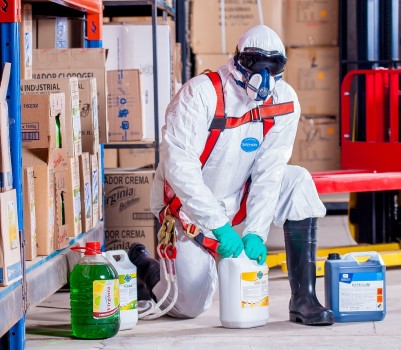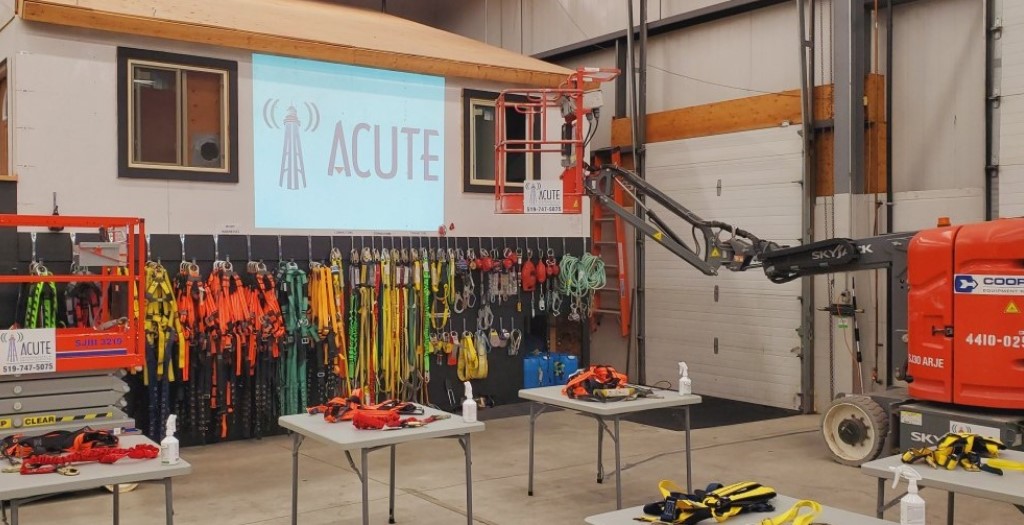JHSC stands for “Joint Health and Safety Committee,” and generally, workplaces in Ontario are required to have one if they have 20 or more workers (click here to see the legislative requirement based on the total number of workers). However, that’s not the full story, and there are a lot more details you need to know! Read on for more.
In this article, we are going to examine what a JHSC is, why they are important, and whether your workplace requires one.
Click on each corresponding link to jump ahead:
ACUTE Environmental is your go-to resource for all things safety training. Simply contact us today if you have any questions regarding your JHSC.
1. What Is a JHSC?

In Ontario, Canada, Joint Health and Safety Committees (JHSCs) are a central part of the province’s Occupational Health and Safety Act (OHSA). They play a vital role in identifying workplace hazards, promoting safe practices, and ensuring compliance with provincial safety standards.
By law, many Ontario workplaces must establish a JHSC—most commonly when there are 20 or more regularly employed workers (details explained below).
Overview of JHSCs in Ontario
Purpose
The primary role of a Joint Health and Safety Committee (JHSC) is to identify and address workplace health and safety concerns. Its goal is to foster a safer and healthier environment for all employees.
Composition
A JHSC includes both worker representatives and employer representatives.
-
Worker representatives are elected or selected by employees.
-
Employer representatives are appointed by management.
The number of members depends on the size of the workforce, with larger workplaces requiring more committee members.
Responsibilities
Key responsibilities of a JHSC include:
-
Identifying workplace hazards and risks
-
Recommending improvements to health and safety policies and procedures
-
Participating in regular workplace inspections
-
Investigating incidents and accidents
-
Promoting safety awareness among employees
Meetings
The JHSC meets regularly to review safety concerns, discuss incident reports, and plan initiatives. While monthly meetings are common, the frequency may vary based on workplace needs.
Training
All JHSC members must complete mandatory training that covers:
-
Ontario health and safety legislation
-
Hazard identification and assessment
-
Incident investigation
-
Effective communication and problem-solving skills
Legislation
The JHSC is established under Ontario’s Occupational Health and Safety Act (OHSA). Employers are legally obligated to:
-
Support the committee’s work
-
Consider and respond to its recommendations
Failure to establish or support a required JHSC can result in significant fines and penalties.
Staying Compliant
Since JHSC rules may evolve, it’s important for employers and workers to stay current with the Ministry of Labour, Immigration, Training and Skills Development’s guidelines. Consulting with safety professionals and engaging your JHSC ensures compliance and strengthens workplace safety culture.
2. Why Is a JHSC Important?

Prevention & Risk Reduction
JHSCs proactively identify hazards, assess risks, and recommend strategies to reduce them. This preventative approach lowers the likelihood of accidents, injuries, and illnesses—saving costs for employers and improving employee well-being.
Knowledge & Expertise
By combining perspectives from both workers and management, JHSCs leverage diverse knowledge to spot hazards more effectively and develop stronger safety solutions.
Regulatory Compliance
In Ontario, JHSCs are a legal requirement under the Occupational Health and Safety Act (OHSA). Non-compliance can result in fines, penalties, and reputational harm for employers.
Employee Engagement
When employees are directly involved in health and safety decisions, they feel valued and invested in workplace safety. This leads to stronger participation in safety programs and better adherence to procedures.
Continuous Improvement
Regular inspections, incident investigations, and data tracking help JHSCs identify patterns and implement corrective actions, driving ongoing improvements in workplace safety.
Training & Education
Certified JHSC members receive training in legislation, hazard identification, and incident investigation. These skills not only strengthen the committee but also spread safety knowledge throughout the organization.
Conflict Resolution
Safety concerns can sometimes create tension between workers and management. JHSCs provide a structured, collaborative process for resolving disputes and finding practical solutions.
Bottom line: JHSCs are essential for compliance, prevention, and fostering a culture of safety. They build collaboration between workers and management while continuously improving workplace conditions.
3. Do I Need a JHSC?
Depending on the size of the workforce, certain workplaces in Ontario, Canada, have a JHSC. The following table summarizes the expectations by worker count:
| # of Workers | Legislative Requirement |
|---|---|
| 1 – 5 |
No JHSC or health & safety representative is required, unless a designated substance regulation applies. |
| 6 – 19 |
A health & safety representative is required, selected by the workers. If a designated substance regulation applies, a JHSC is required instead. |
| 20 – 49 |
A JHSC is required with at least 2 members (one worker, one management). |
| 50 + |
A JHSC is required with at least 4 members (equal worker and management representation). |
What About Designated Substances?


Even small workplaces may require a JHSC if they deal with designated substances (e.g., asbestos, lead, benzene).
To determine if your workplace is affected:
-
Review the Ontario Ministry of Labour’s list of designated substances and related regulations.
-
Consult the Occupational Health and Safety Act (OHSA) for legal requirements.
-
When in doubt, seek advice from a qualified health and safety professional.
Important: Designated substance regulations are mandatory, regardless of your workforce size. Employers may be required to conduct exposure assessments, implement controls, provide training, and maintain compliance records.
4. JHSC Training Requirements

Unless stated otherwise in regulations, the Occupational Health and Safety Act (OHSA) requires every JHSC to have at least two certified members:
-
One worker representative
-
One management representative
How to Become Certified
To earn certification, members must complete two mandatory training components:
-
Part 1 – Basic Certification Training: Covers health and safety law, rights and duties, and hazard recognition.
-
Part 2 – Workplace-Specific Hazard Training: Focuses on significant hazards in your industry and workplace.
Refresher Training
-
Certification must be renewed every 3 years through a Refresher Training course.
-
A one-time exemption from refresher training may be granted if the certified member has actively participated on the JHSC within the past 12 months.
JHSC: Take the Next Step with ACUTE
If you supervise workplace health and safety—or if you’re concerned that your workplace may not be fully compliant—now is the time to act. Booking a JHSC Certification course with ACUTE ensures your team meets Ontario’s legal requirements while building a stronger culture of safety.
- Open Door Instructor-Student Partnership – ACUTE’s training services emphasize client participation, staff foster relationships with clients and serve as a touchstone for advice anytime moving forward.
- Serving Your Team and Industry – With a vast array of clients in manufacturing, construction, health, academic, and government sectors, ACUTE brings the best safety practices from across the spectrum to your workplace.
- 100 Years Combined Experience – ACUTE provides comprehensive health and safety training, on-site safety services, and consulting services. With over 100 years of combined experience, our company staff offers more than theoretical or abstract ideas. ACUTE offers solutions!
- Track Record of Success – ACUTE is rated 4.9/5 stars on Google reviews, demonstrating our commitment to our clients, our quality, and our passion for training.
ACUTE offers courses such as, Due diligence for employers and managers, Worker health and safety awareness, Workplace violence and harassment, Working at heights, and Confined space rescue. For a full list of our training courses, click here.
What Our Customers Are Saying…
We were referred to ACUTE on behalf of our employer for an n95 mask fitting – the staff here are professional, personable, and informative.
I’d come back here for any safety-related training in a heartbeat.
Acute has been a staple in supporting my companies over the years and have always delivered quality and dependable service. Training programs are top shelf and a great facility for practical application. couldn’t recommend them more. keep up the great work folks.
Outstanding service provided by Acute, right from the customer support end, right through to the delivery of the session. Always professional, quick to respond, and always delivering services that exceed my expectations. Acute has an amazing team that is always helping us achieve better health and safety performance. So are grateful to have such a tremendous resource in Acute!
Hours of Operation and Contact Information:
Monday-Friday: 8:00 AM – 5:00 PM
Saturday-Sunday: Closed
Phone: (519) 747-5075
Fax: (519) 747-4608
Email: info@acuteservices.com

